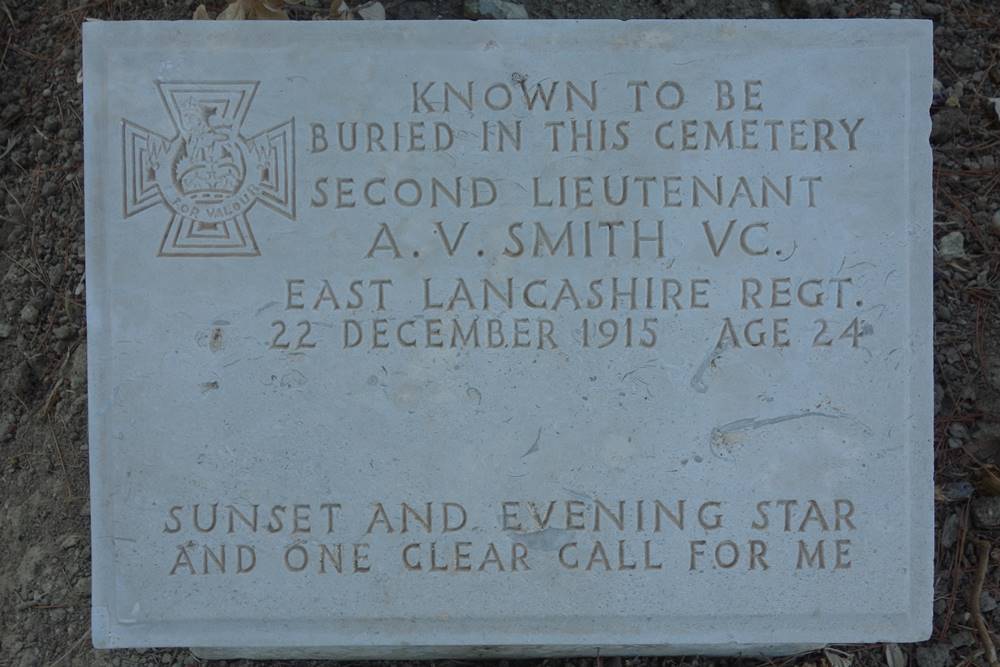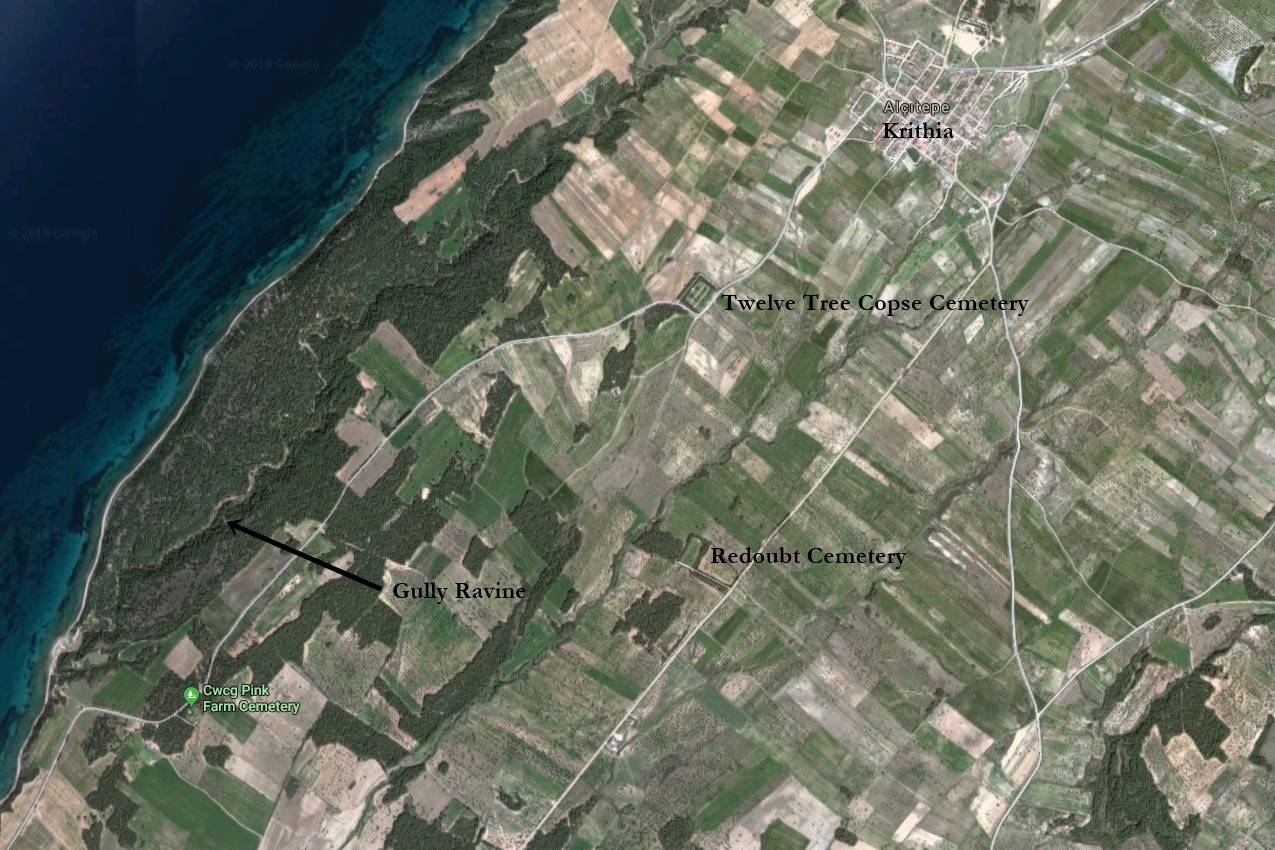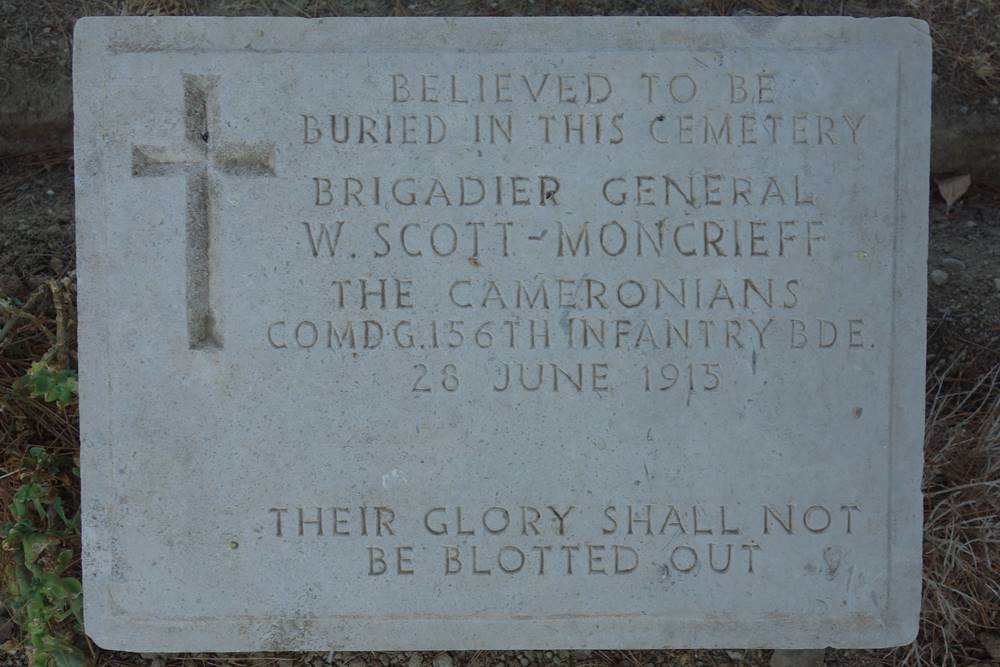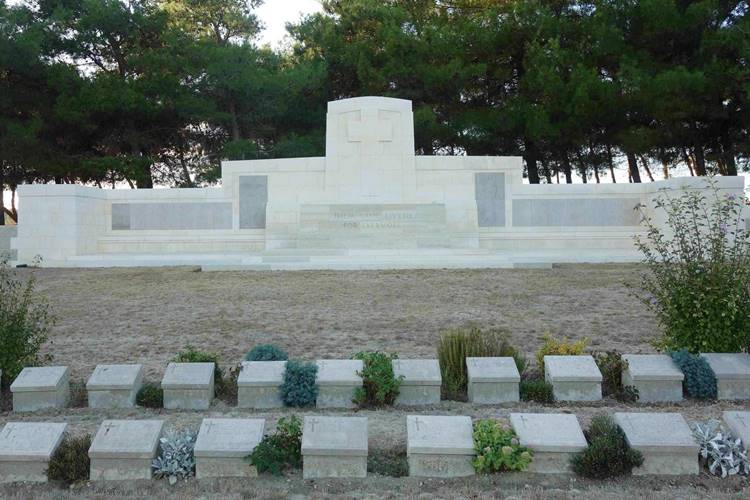This page is about Twelve Tree Copse Cemetery and is one of a number of articles I have written about Gallipoli. I have also written guides to help you research soldiers who served in the British Army during the First World War:
Twelve Tree Copse Cemetery
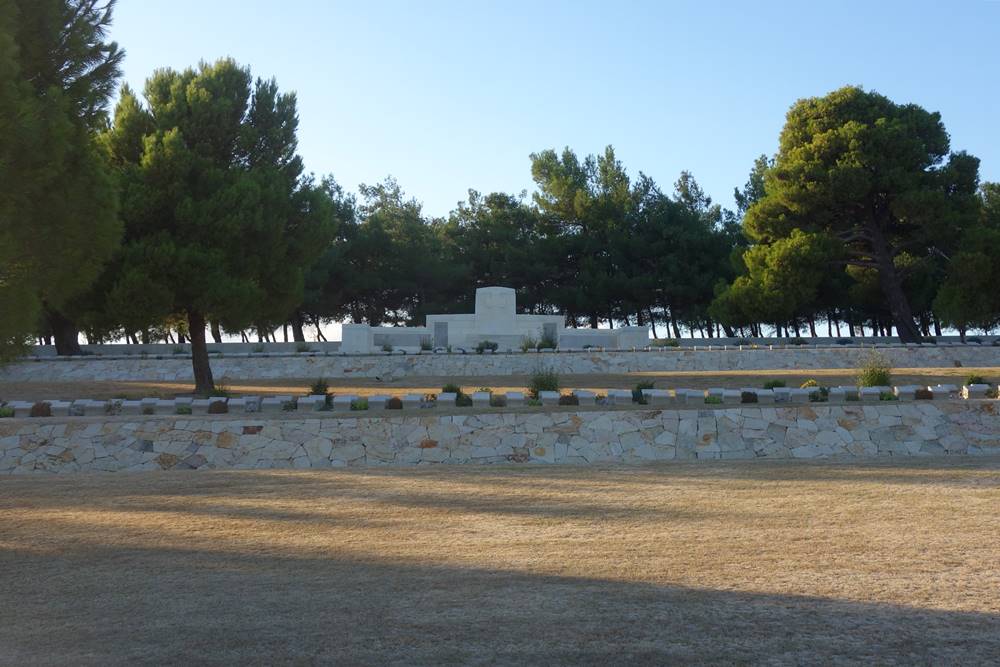
The map below shows the location of the cemetery and the road it’s on leads to Pink Farm Cemetery and to the Helles Memorial. Just past Pink Farm Cemetery, where the road straightens to follow the coast is a path leading down to Gully Ravine. You can walk up Gully Ravine and if you take one of the side paths up the side of the Gully you can still see the outlines of trenches.
One of the special memorials in Twelve Tree Copse Cemetery is to Brigadier-General William Scott-Moncrieff, who was commanding 156th Infantry Brigade, when he was killed in action on 28 June 1915. Scott-Moncrieff had seen service during the Anglo-Zulu War, 1879 and the Second Boer War where he was wounded at Spion Kop. Scott-Moncrieff was killed in action leading two companies of the 7th Battalion, the Cameronians forward which had been held in reserve during the Battle of Gully Ravine on 28 June 1915. The following appeared in The Scotsman on 8 July 1915:
He was, indeed, a man of fine nature an embodiment of the qualities which we are often proud of in our soldiers. He was a soldier born. The purpose to be a soldier and the spirit of a soldier were present in him from early boyhood. His experience of service abroad and at home increased the hold upon him of all honourable rules of life and fine impulses.
He was modest and self-effacing in ordinary life almost to excess, but instant in zeal when the duty and opportunity of a soldier called him… His affection for his family and home, and his love of his own countryside, to which he had retired, make more notable the promptitude with which, when the war began, he gave up all for King and country.
Also commemorated by a special memorial in Twelve Tree Copse Cemetery, is Second Lieutenant Alfred Victor Smith, who was awarded a posthumous Victoria Cross for throwing himself on a grenade on 22 December 1915. The citation for the award is as follows:
For most conspicuous bravery. He was in the act of throwing a grenade when it slipped from his hand and fell to the bottom of the trench close to several officers and men. He immediately shouted a warning and jumped clear to safety. He then saw that the officers and men were unable to find cover and knowing that the grenade was due to explode at any moment, he returned and flung himself upon it. He was instantly killed by the explosion. His magnificent act of self-sacrifice undoubtedly saved many lives.
Alfred’s epitaph is from Alfred Lord Tennyson’s poem Crossing the Bar.
